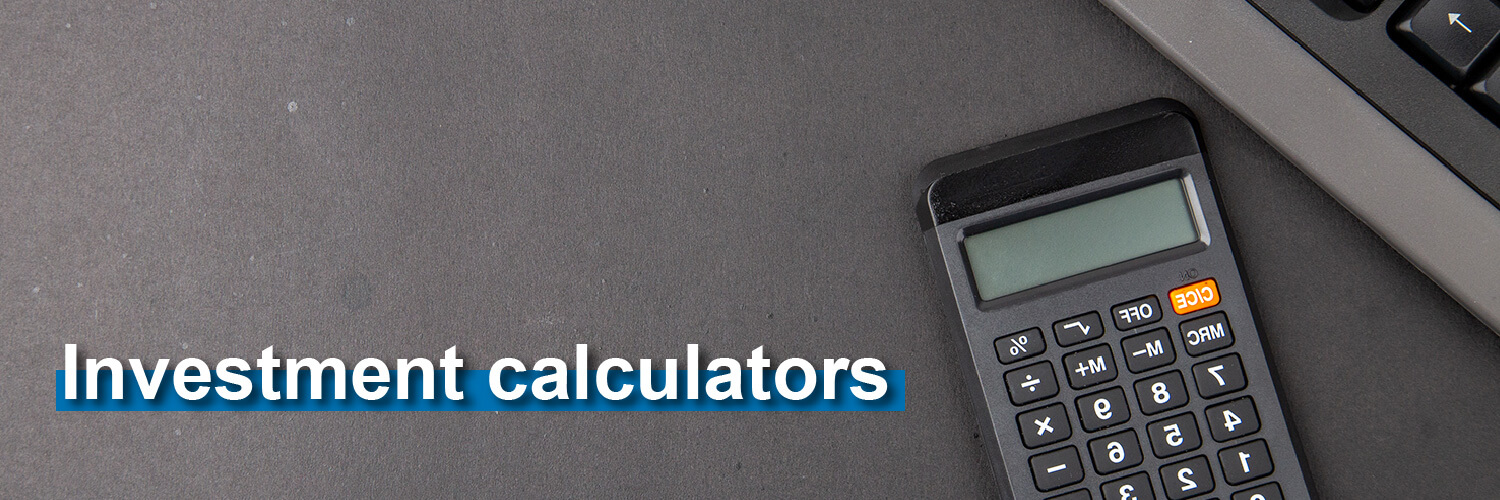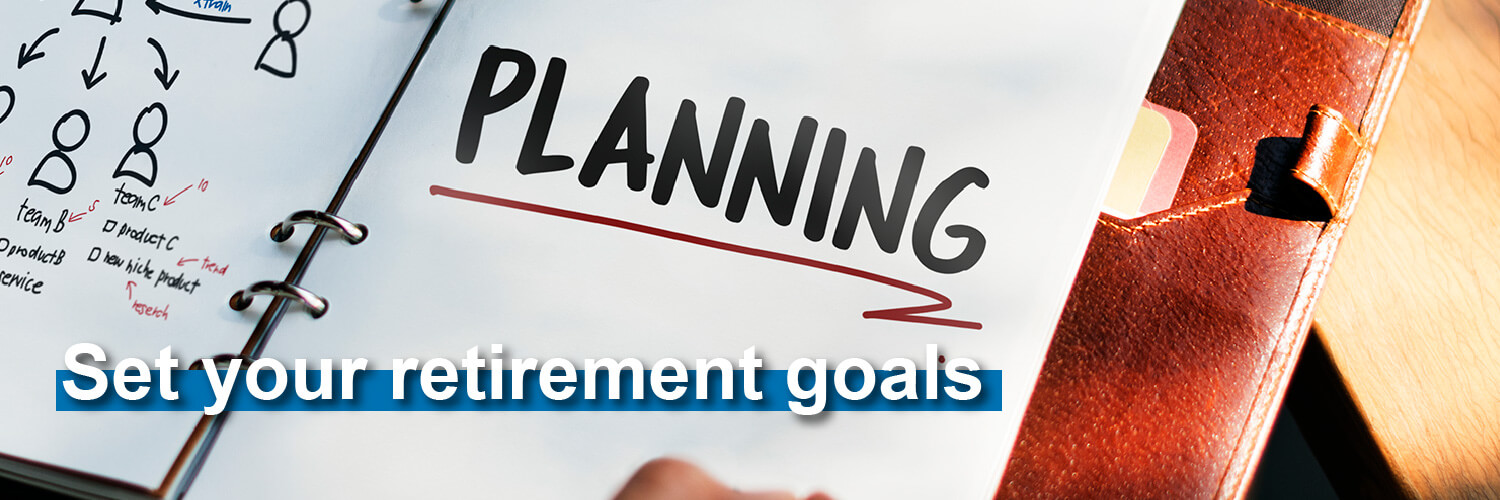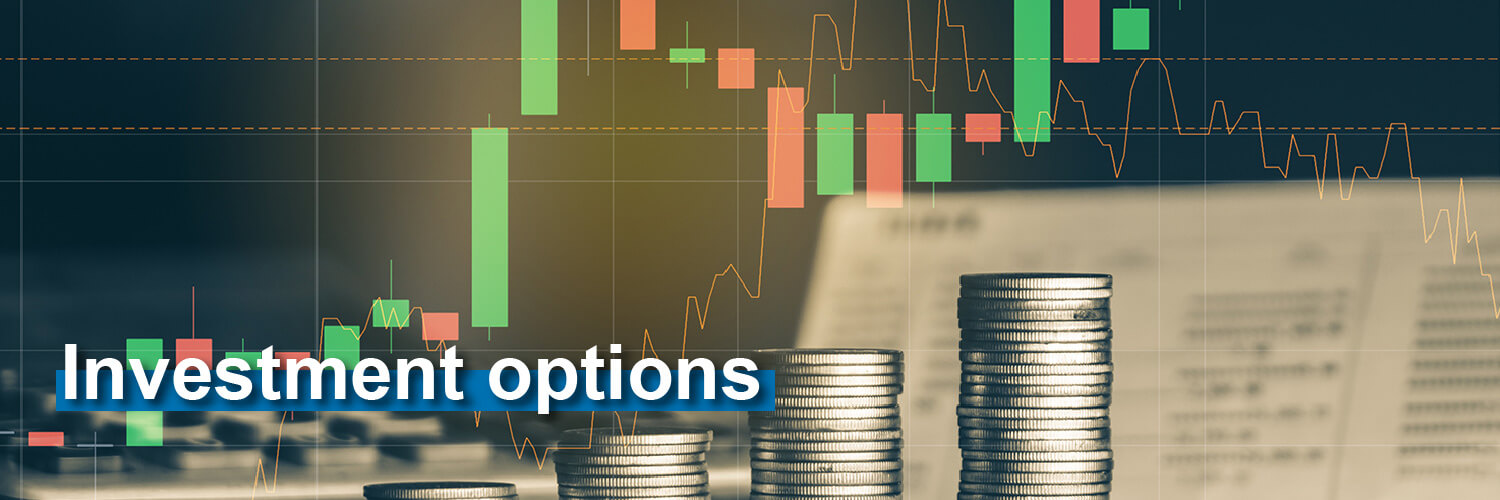The layman’s guide to growing your nest egg
From investing in the Stock Market to CD’s and Bonds
The new year is the perfect time to assess your budget and think about where your money IS and WHAT it’s doing FOR you. This is the type of knowledge I take for granted, but I have learned over the years this is not the type of information most people are familiar with. Everything here is meant to be simple and down to earth so that everyone can learn about several types of investments to consider. You don't want to just sit on money in your low interest savings account making 10 cents a month for decades. There are plenty of SAFE (and of course less safe) options for creating growth from your hard-earned money. Some of these options are no more risky than your savings account!
Since I felt that all of my family and friends should know this stuff, it seems I might as well share it with them here and the world! Finance should not be a taboo topic, because that prevents people from learning and growing. Most of my finance knowledge comes from my amazing parents and having transparency about money, along with sharing their good and bad experiences with different types of investments.
So go out there - BE transparent. Talk about how much you make and your position in retirement. I hope everyone can learn something from this blog, and I would be excited to get a comment teaching me something I don't know!
Why listen to me?
Yes, I appear to just be a photographer if you read most of my blogs. I am not a financial expert by any means. I have no bias, I only want everyone to succeed. What I bring to the table is the perspective of a self-employed entrepreneur who, for whatever reason, is fascinated by budgets, finances, and retirement - and consequently will brag about being pretty good at all of the above (that statement is for the introverts out there - be confident and brag about your strengths!).
I spend more time than I care to admit on these things, constantly assessing and looking for better options. Over the last 8 years, I have built my fair share of knowledge on different ways to invest money and how to best utilize and diversify with those options.
Intro Summary
I want to start here because this can be a long and intimidating blog. I wanted to give a very short recommendation right here in case you decide to read no further. If you are in your 20’s or 30’s, start now. If you have NOTHING in retirement started yet and your job offers nothing either (such as a 401k or pension) - Get an IRA account started right away. Your first goal should be to work towards putting $6,000 a year (per person in your family) into that. IF you can reach that goal by 30, you are in position to retire very comfortably.
IF you want to understand WHY that is true - keep reading :)
Of course, this isn’t all I would recommend, but if you did nothing but that - you would be in good shape.
*Please note that all of the following information is based on knowledge as of January 2022 and to always triple check any decision you make, as well as consider a professional financial advisor.
Here are the 9 topics this blog covers, if you want to skip ahead to any particular one:
- Investment calculators
- Set your retirement goals
- Let’s talk about taxes
- Job offerings
- Investment options
- Safer ways to invest your emergency fund
- Real estate
- Risk and diversity
- Final thoughtsFinal thoughts
Investment calculators
These are just fun toys, aren’t they? It is so satisfying to run an investment calculator and watch your money grow over the next 10, 20, 30+ years in a colorful chart.
Here is a super simple calculator I love that only has 5 questions and works whether you have started planning or not:
Super Clean Investment Calculator
This is to give a VERY big picture view, based on current/retirement age, starting amount, monthly contributions, and expected interest.
Start playing around with this by putting in what you already have in place and see where you will be when you retire. Do you like what you see? Well then, congratulations! You are potentially already in good shape (see the next section for how to know if you’re in good shape)! If not, keep reading.
It is important to ultimately calculate how much money you want to have in your investment account by 65. Think about not just how much money that account has, but how much interest at THAT point that it is making per year. Ideally, you can live off of the inetest alone for the first half of retirement and then start pulling from the rest.
Set your retirement goals
This is the BIG STEP to start off with. Here, you will spend quite a bit of time and all to just produce a single number - what is the final dollar amount you would like to have saved for when you retire.
Simple right? Of course not, there are SO many factors to making that calculation. Don’t just Google it, trust me.
Once you know this answer, you will then be able to figure out how behind/ahead you are of your goals and start planning accordingly. Here are the things to consider:
- Inflation - Consider rising inflation. Your expenses now will not be your expenses in 40+ years.
- Budget - Consider your current budget to paint an accurate picture of what you need. Is that how much you want to keep making in retirement, or will you need more/less?
- Lifestyle - Consider the lifestyle you want - do you want to sell your home at 65 and buy an expensive beach house? Do you want to travel the world? These things may mean your desired “income” in retirement is higher than it is now and requires a more ambitious retirement plan.
- Medical Costs - I wish I didn't have to say this entire section, as I wish we had universal healthcare like the rest of the civilized world, but we don’t. Medical debt is the #1 cause of bankruptcy and the #1 Go-Fund-Me project. Consider that medical costs go up as you get older and you may also face more medical bills in general. Be conservative on medical costs, they can very realistically be 5 times what you are paying in your 30’s as you get closer to and are in retirement. Keep in mind that you will have medicare after 65, which covers 80% of your medical expenses and IS affordable. However, covering that other 20% can still be a lot. Medicaid can cover that other 20%, but it is pricier AND only for low income families.
- Social Security - If you watch the news, they’re constantly saying social security won’t exist for some of us at retirement. However, they have been saying that for decades and keep managing to keep it alive. If it is available, it can honestly be a GAME changer to your plans. However, a conservative budgeter would be best off ASSUMING you won't get it at all. Best case - it’s bonus money if it is around for you, creating an even better and safer retirement. IF/WHEN you are in your mid to late 50’s, you will have a better idea on if you can expect social security and you can potentially make some adjustments (such as less contributions towards your retirement fund at that point and/or lower your risk levels). In the meantime, you can create an account with Social Security online at ANY age and get an estimate of what you might get in retirement. *On a side note, be aware you can be eligible for MORE money per month from social security if you wait until age 70, versus pulling at 65.
Give some serious thought, be very conservative, and ultimately decide how much you want to make per year from age 65 to potentially age 100. For example, $100K a year would mean $4.5 million for retirement, right? WRONG!
Here is the good news with that example, you don’t have to save up every penny, as you will STILL be making INTEREST into retirement. The goal, in my opinion, is to be able to go through the first half of your retirement off the interest. Then, you can use the second half of retirement going through the rest.
This also protects you by not touching the original retirement right away, and instead just using its growth. That being said, you can see with that calculator that, just for example, a nest egg of $1.2M in retirement can be making you $100K interest a year (8%).
So, instead of needing $4.5M, you only need $1.2M to have an annual income of $100K. No, it’s not THAT simple, to be clear. Consider taxes, market versatility, the risk levels you may adjust to into retirement, etc…
Once you have an idea of your nest egg goal - don’t forget to think about WHEN you want to retire. The “Traditional American 65” doesn’t have to be you, but of course it can be if you want. Heck, you can even consider “partial” retirement, such as around age 50 working part-time and then go full retirement at 65. Think about these kinds of things and build your dream retirement budget accordingly. It may be more achievable than you think.
You may need to save aggressively (50% of your income or more and cut back on optional spending) or you may find you can reach your goals more easily depending on when you start(ed).
If you want tips on THAT - look no further than my blog on building towards financial freedom with goals and budgets!
Let’s talk about taxes
This can be a huge factor in your investing. Do not neglect understanding how your contributions, growth/interest, AND withdrawals get taxed. Also keep in mind that many tax-saving accounts (like IRA's and 401k's) have requirements for these tax savings (such as waiting to pull funds until you are at least 59 1/2 years old). Everything gets taxed in a variety of ways, but here are the two main ways to understand:
Tax-Deferred
Tax-Deferred means you won’t pay ANY tax on your contributions or as you accrue interest on that investment. You ONLY pay tax “fully” on what you withdrawal. I am personally less of a fan of this, as the end goal for investments is to double, triple, maybe even get up to 10 fold growth on what you contributed. So you end up paying a lot of tax on just the interest. HOWEVER the PRO of this is that since you don’t pay taxes up front, there IS more money in your account growing for you - which may completely offset the taxes you end up paying when you start withdrawing.
Another “way” of describing this is that your contributions to this are “pre-tax”, so basically what goes into this each year comes OFF of your taxable income. It is a good way to lower your taxable income each year to get into a lower tax bracket. In some cases, you can SAVE MONEY by putting a few thousand dollars into something like a traditional IRA.
Taxable
This means you pay taxes on what you contribute up FRONT and then don’t have to pay taxes on what you withdraw.
Another “way” of describing this is that your contributions to this are “after-tax”, meaning if you put $6000 into something like a Roth IRA that are taxable, you still file that money as income for that year and fully pay taxes on it. But then in 40 years if that $6000 is now $30,000, you can pull it all out and not pay any taxes on it.
Both
Now, there are additionally many ways to invest that don't really have ANY tax benefit. I will mark these as "both", as in a sense they are both taxable and tax-deffered. You will pay tax on the amount invested (taxable) and still then pay taxes on the interest gained when you pull it out (tax-deferred). This is the type that is of course least ideal. That is why the IRA accounts are most recommended, due to these great tax benefits.
Which is best?
One thing you will often be told to think about when it comes to which of the above is best - is to think about how much INCOME you plan to make in retirement versus now.
Another way to say is - will you be in a higher or lower tax bracket when you retire?
If you will be in a higher bracket, it is best to be in a taxable investment (pay the taxes now while the bracket is lower). If you will be in a lower bracket, go with tax-deferred so you pay a lower tax bracket on that money when you retire.
My thoughts on this are that you are more likely to be in a LOWER bracket, since you won’t be working, and so taxable is better. HOWEVER - For tax reasons like I described above, having at least one taxable option like a Roth IRA can be helpful for saving taxes by lowering your taxable income. I also am a strong believer in DIVERSITY, and so it may be smart to bet on both horses - have a fair share in taxable AND tax-deferred for the “unknown” future.
What about paying off debt first?
Before we go further, you may be thinking about paying off your debt first - before then building a nest egg. There are pros and cons to this.
Being debt free is a fantastic goal that very few achieve (roughly 20% of Americans), but as exciting of a goal that is, do not focus on that fully in place of starting at least SOME sort of retirement plan as soon as you can. If you can make 8-10% interest on your investments, it is more important to have that going than paying off your mortgage to save just 2-3% off their interest.
I am NOT advocating for ignoring your debt. But I do suggest a balance that includes starting some sort of retirement plan (no matter how small) right away, even if you still have debt.
The reason is simply this - if your investments earn just 7.1% interest a year, that will double the investment every 10 years. The Rule of 72 is also popular - take the amount of expected interest and divide 72 by that number to know how many years it will take to double (such as 72 divided by 10 for 10% means it will double every 7.2 years).
I bring this up so you understand why everyone always says it is such a “huge” difference to start investing YOUNG. Someone at 25 versus 35 - that 10 year head start means their entire nest egg potential being double that of the person at 35. The later you start - the harder you have to work.
Job offerings
I’m no expert in this area, as I have never held a job with these offerings and am now fully self-employed. However, these two options below operate like investments and can have their pros and cons. In short - you want to read ALL the fine print and consider if it is worth taking advantage of these offerings or not.
But I can help you out on that front, in terms of things to be wary of.
401(k)’s
Tax Type - TAX-DEFERRED
401(k)’s can be good or bad, depending on what your company match is and max annual match amount. You don’t get much control on what stocks are invested in, but there are tax benefits as well, and I would recommend considering at least doing this FIRST, if it is available, up to the annual max match amount - after reviewing the cons below and potential downsides.
The nice thing about a 401(k) is that it is PORTABLE when you change jobs; it can roll over to your next job, be cashed out (not ideal), or just converted to an IRA account (great option if it can’t roll over to a new job). It is also safe from bankruptcy, unlike pensions.
Watch for fees - if you are paying more than 1% in fees from your employer's plan, it is not ideal and you may consider NOT contributing to this. There may also be other fees to worry about if you leave your job early, such as loans on fees due within 5 years. Read the fine print! Review your annual *required* fee disclosure statements.
Know how long until you are “vested” into the plan. This is usually 2 to 3 years. If you quit that job before you are vested, you don’t get to keep ANY of your employer's contributions.
A bonus of a 401(k) over IRA's is the max contributions per year. For 2022, you can put up to $20,500 into your 401(k), whereas the IRA acocunts are maxed at just $6,000 per year. Depending on your income level, you can also take advantage of BOTH of of these accounts - meaning you can max out both your 401(k) and IRA. The limits for each do not overlap.
IF you roll over to an IRA, do NOT take a CHECK to transfer over, as that will penalize you 20% income tax. Instead, you want it directly transferred into the new IRA.
Under 401(k)s, you typically get one big lump sum when you retire - which you could still put into another investment account or just immediately use that for retirement. Again, keep taxes in mind. Since it is tax-deferred, taking the lump sum means paying taxes on all of that at once. If you have a $1M buket and pull it all out in one year, you will be paying the highest tax bracket. It would be best to roll that lump sum into an IRA directly and then allow yourself to pull out that money in smaller amounts.
There isn't MUCH choice on what you invest in but it does have a good level of transparency to see what is going on and offer some broad choices on the investments. It never hurts to ASK. Ask your employer if there are any other investment options, so you know if you have the best one. Or perhaps another plan with lower fees or better “fine print” rules.
You don’t want to touch this until you are 59 ½ years old to avoid penalties and higher taxes. On the FLIP side, there can be penalties for NOT withdrawing by age 72, so don’t wait too long either. There could be HUGE penalties for not having withdrawn a certain amount/percent of your total fund by a certain age.
Hiring a financial advisor as a fiduciary could also be a good plan, as they would be required to help select the best option, not the one that gives the most profit to themselves.
Pensions
Tax Type - TAX-DEFERRED
These don’t roll over to a new job but can still be cashed or rolled into an IRA account. The nice thing about having THIS is that you don’t contribute to it - it is exclusively an employer-funded plan. So really, if you have it - it's a bonus, and you don't have to worry about how much to “invest” into this.
However, this really is not something I would even use when calculating retirement, as it is NOT safe from if your company goes bankrupt. It is a bonus to have it, but I would not rely on it or let it play a big part of my nest egg plans.
Under pensions, you typically get monthly installments when you retire (some offer lump sum but it is rare). There is very little transparency or choice on what your money is invested in.
Investment options
Now for the real bread and butter. Obviously, the 401(k) and pensions above are also investments. But you get little control over that and those are limited to your job. Here is where you can gain complete control and be detached from your job with your retirement.
You have likely heard of, and potentially already have, an IRA account. There are actually two different types and this is, without question, one of the BEST starting points. But there are other ways to invest, so let’s break it down.
IRA (Individual Retirement Account)
The reason you start here is because of taxes. IRA’s are designed for individuals to retire in the United States and are savings accounts effectively with tax advantages built in.
That being said, there is a max annual contribution per person of $6,000 ( not per IRA, but for ALL IRA’s you own). That does increase to $7,000 when you are over 50.
If you start something like this in your 20’s and go to the max contributions, you are in a great position to retire with a good nest egg. It may, in fact, be ALL you need.
EXAMPLE - If you contribute $6,000 a year starting at 25, with an empty account, and expect an 8% return (conservative), by 65 you will have a little over 1.2 million. That seems like a lot, but remember my notes about inflation and taxes. That MAY be all you need to retire, but only you can say what your retirement goals are and how much you want to have.The above example would be earning about $100,000 a year in interest. You would have contributed $240,000 over 40 years and then ended with not only 1.2 million, but $100k in interest that you can live on without even touching the 1.2 million.
BUT - don’t forget about taxes and…more importantly, RISK factors I discuss further down.
Like I mentioned before, there are TWO types of IRA accounts. The difference between them is simply how they are taxed:
- Roth IRA - TAXABLE
- Traditional IRA -TAX-DEFERRED
For this reason, it is good to consider having BOTH, for variety. I will discuss this more when I talk about diversification.
Index Funds, ETF’s, Mutual Funds
Tax Type - BOTH
This is a broad section, I know. However, I do recommend maxing out your IRA’s first, and if you have/need more beyond this to invest and want to invest more in stocks - learning more about these three types of investments is your next step.
Understand you have left the “tax benefits” world of IRA’s. Do your research. If you are ready to put more into stocks, then now is the time to really seriously consider a financial advisor to map out the best course and understand taxes on these.
Safer ways to invest your emergency fund
The stock market obviously has its risks, though arguably it has had a 10% return average over the last century. That being said, risk management is KEY, and you don’t want all of your money at risk in the stock market.
This may not ALL be your emergency fund. It may be short term goals you are saving up for. Instead of just growing that manually in your savings account, you can take advantage of these safe investments below for things like a new car, college, or a down payment on your home.
*Keep in mind, however, that accounts like IRA’s and funds LET YOU set risk levels, meaning you could be “100%” relying on your IRA and simply set a risk level such as keeping 40% in cash/bonds. So, you can potentially not do anything I am about to say and stick with investments above simply by controlling the risk level of your account(s).
However, here is my argument for these safer options. You SHOULD have money outside of stocks for when you need it. New roof, new car, basement floods, job loss, having a kid; all sorts of unexpected things can happen. It is recommended to have at least 6 months of your income in savings.
That being said, I am a believer that even THIS money, this emergency money, can be put to MUCH better use than sitting in your savings account.
That is what this section is for- the money you thought you should just leave in your savings account making almost no money. These are SAFE ways to capitalize on those funds, while keeping them accessible in an emergency.
Savings Account
I know I just said your savings account is garbage - and it probably is! But there ARE high-yield savings accounts that you can get. Just a simple switch of who you bank with (I speak from direct experience here) can mean going from getting a “joke” of 25 cents a month to instead $7 or $8/mo on that same money. I know it still isn’t your retirement plan, but making 20x interest by just changing banks isn’t a bad plan.
NOT A SPONSOR - I highly recommend this account with Capital One, as it has one of the highest interest rates for a savings account in the nation - Capital One 360 Performance Savings Account. No fees or minimums, just a good interest rate.
CD’s (Certificate of Deposit) and Bonds
You have likely heard of these, and no they don’t make nearly as much as investments. But again, that is not the GOAL here. This is to take advantage of your emergency fund.
You may have two doubts at this point:
- But wait, you have to hold these long term, don’t you?
- Why are we talking about both of these together, aren’t they VERY different?
You have valid concerns, but hear me out.
First of all, a good part of your emergency fund is not money you EXPECT to need. In fact, you HOPE you never do, right? These options actually have very manageable withdrawal policies that mean that WORST case scenario - you just get all of your money back with no interest gained. Best case - you can make 3-4% interest in a very safe way.
The reason I talk about them TOGETHER is that they are a yin and yang situation. Here is what I mean. You will often hear someone say “CD’s are garbage right now” or “You should get a bond!” due to certain factors in the economy. What that tends to be tied to is the current interest rates set by the US. When interest rates are LOW - Bond’s tend to be better than CD’s. When interest rates are HIGH - CD’s go up in value and are better than bond’s.
So you may find a good strategy in comparing the two each year or every five years and deciding which is best at the time.
These ARE great for funds you think you can avoid touching for 5 to 20 years. That may be funds like saving up for a house down payment, college for your kids, or your next car. This is money best NOT in investments, but make sure it’s money you can live without for those years it’s away and making you money. That extra cash is perfect for CD’s and Bonds!
The example I want to give before going into details is this - Imagine instead of paying INTEREST on each CAR you buy, what if I said you can instead get literally 50% OFF each car you buy? Talk about a strong reversal! It isn’t even crazy, sketchy, or complicated. I promise. Let’s say you want to switch cars every 10 years (or whatever amount you want). If every 10 years you buy Series I Savings Bonds the equivalent amount of 50% the cost of your next car, these bonds are guaranteed to double in value at 20 years. No, you can’t touch it a day before 20 years or you only get 0.10% (garbage), but at 20 years - DOUBLE. Put in $10K now, and in 20 years you can buy a $20K car - half off! (though don’t forget taxes - to be fair).
Let’s get to specifics.
CD’s
Tax Type - BOTH
Again, these are great when interest rates are high. Of course, they are no “mystery”. You can look up CD rates any time you want and decide if it is worth it, compared to bonds. Right now? CD’s make LESS than my High Yield Savings Account. Yes, they are that bad. But in the past, they can make 1, 2, 4, 8% even! Granted, they have been downward since the 80’s. However, even a 2% CD may be your best bet for this emergency money compared to your savings account and bonds - depending on how bonds are doing.
You can do a CD as short as 1 year, and typically you can END a CD at ANY time and the penalty is just losing the last 3 months interest. This means the money is liquid, if you need it for an emergency. You can do up to a 5 year CD as well and typically a longer CD gets higher interest, but not always. Read that fine print!
CD’s are extremely safe, as they are guaranteed by the bank and protected by the FDIC up to $250,000. So basically, safe as long as your government doesn’t go bankrupt. But in that case, even your savings account is at risk, so it’s really the same risk.
Bonds
Tax Type - BOTH
Bonds are, in concept, the same as CD’s, but instead of being through a bank, they are from the government directly. From a risk standpoint, they are therefore comparable to CD’s and your bank accounts.
They are, again, usually the better scenario when interest rates are low. As of writing, that time is NOW folks. NOW is a GREAT time to consider bonds.
There are MANY types of bonds. You can safely and securely set up an account with the US Treasury directly from treasurydirect.gov. This is THE spot to do this, unless you have a financial advisor managing it for you.
LIMITS - Like IRA’s, these fantastic deals do have limits. You can only have $10K per person per year per bond. I know I said “per” a lot. An example of how these limits work is that, effectively, a married couple could start $40K in bonds each year if they each do two different bonds and $10K per bond.
The bonds I recommend, one of which being from my example, are the Series I Savings Bond and Series EE Savings Bond.
Series EE Savings Bond
Series EE is the one from my example and is an effective 3.53% IF and ONLY IF you don’t touch it for 20 years. 19 years and 11 months and you get 0.10% (garbage), and your high interest savings account would have been better off. But it is guaranteed to double in 20 years. It lasts 30 years but keeping it between year 20 and 30 has ZERO VALUE. Your main goal is to take advantage of it doubling at 20 years. Then just pull it out, and depending on your goals, you may decide to put it back in and double it up again in 20 years.
Series I Savings Bond
Series I is not guaranteed to have any particular rate (though of course always a positive rate) but it is currently getting 7.12% - fantastic! Fantastic and yet also a historical LOW - believe it or not. You may be thinking this is almost as good as stocks with MUCH lower risk - why not just put all into bonds? First of all, the annual limits will be an issue. You can keep buying the limits every year but after 30 years they will start expiring and so it is harder to build a large nest egg that way. Second, the stock market averages 10% and even just 1% point higher or lower can have a huge impact over 40 years (just see in that calculator by changing your total plan by 1%).
The nice thing about Series I is that you can pull it after 5 years with no risk and still keep all the interest! Better yet, like a CD, if you pull early between 1 and 5 years you only lose the last 3 months of interest - not a terrible downside.
Gold and Silver
You can certainly go the extremely cautious route, I mean “I think the government might collapse” cautious and buy physical gold and/or silver. Know that this is almost like stocks, however, in that their value also fluctuates. For example, right now the prices on gold and silver are particularly high and so buying them “now” for caution would be costly - though who is to say where they will be priced at in 30 to 40 years.
Real estate
I am going to throw out this very broad area, but it is in fact a very high potential area to consider investing in. Beyond investing capital in stocks, CD’s, and bonds, one resource of potential is land. Land is a limited resource and is seperate from stocks in that it can grow or shrink in value independently from the ups and downs of the stock market.
Consider things like flipping homes, renting out houses (for bonus residual income now and/or in retirement), or even buying a good piece of land at an affordable price with the goals of eventually renting it out for someone else to fully deal with. You could simply own the land in that scenario and someone else can build on that, and you don’t have to worry about any maintenance as you are simply the landowner.
Of course, that is all easier said than done. But - if diversification is your thing - then this is a fantastic branch to extend into.
That is about it on places to invest, but here are a couple last things to think about: Risk and Diversification.
Consider risk factors
Now, this is important. You’ve run the numbers and have a plan. It is important, however, to consider what the stock market can be like. It can crash and you can “lose” half of your investments - TEMPORARILY. That last word is important. Other than the wall street crash of 1929 where everyone lost everything, the market has since recovered from every crash and gone higher than it was. In the 2008 crash, for example, it fully recovered in roughly 4 to 5 years.
What does this mean for you? First of all, DON’T panic if this happens, knowing it will recover in time. But DO consider your risk management as you approach the last decade before retiring. It may mean lowering your risk levels so you have more in cash/bonds/cds. But, that does also mean you will get less reward during that time, and so you may not reach your goals.
This is also why I like a conservative growth of 8%, even though industry standards say at least 10% can be expected. It conservatively balances out for potential crashes and also for if you lower your risk levels.
What do you do if there is a market crash DURING retirement? The best thing you can do is not pull money out of your investments, as they are effectively compressed in value by in some cases 50% or more. If you pulled out $100K in 2009, you basically lost $100K compared to 2007 when that would have been $200K. Similarly, waiting until 2012 would have gotten that $100K value in 2009 roughly back to that $200K value that it had in 2007, before the crash. During those times, which are bound to happen in retirement, you want to instead either refrain from pulling funds or pull instead from your cash/cd/bond sources.
Even your IRA has those risk factors, if you recall. If you are 40% low risk in cash/bonds then you can pull out from that portion specifically and leave the money that is in the high-risk “stocks” category alone until the market recovers.
Diversity
I have mentioned this before, but want to emphasize again, that a safe and conservative individual will recognize there is always unknown in everything you do, and so the more you can diversify, the better off you are. For example, relying fully and solely on job offerings is not ideal. Having a mix of investments and bonds/cds, instead, will give you great comfort.
Final thoughts
Yes a second, and more proper, at-the-end summary! I won’t repeat the first summary, but the gist of that is that you want to take advantage of a well-formatted 401k or pension if you have one. If you DON’T - The Roth/Traditional IRA combo is the best thing to start with.
ONCE that is maxed OUT (meaning you have more than $6000/year/person going into that and your retirement goals require putting even more away) -THEN you can start investigating the other options I talked about (such as an index, ETF, or mutual fund).
However, you may be all set with just maxing those IRA’s out, depending on WHEN you start, HOW quickly you can get to that $6K max, and WHAT your retirement goals actually are (when you want to retire and how much you want per year in retirement).
Somewhere in between those two points in time - don’t hesitate to lower your risk, however, with things like bonds and CD’s.
The last thing I want you to take to heart is that just because something is MAKING you interest, doesn’t mean it is the BEST use of that money. The goal, after balancing risks, is to put your money diversely into the best positions possible.
I know this is a doozy of a blog, comment below with any questions, advice, or concerns!
Recent Blogs
Four Seasons from Above in Downtown Fort Wayne, Indiana
Unlocking the Power of QR Codes

About the Author
Founder and visual artist, specializing in all aspects of a businesses presence from imagery and video to graphics and web. A graduate of IPFW with a Bachelor in Fine Arts, Concentration Photography as well as an Associates Degree in Business. His personal photography works are focused on landscape, travel, and aerial photography.
















